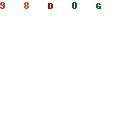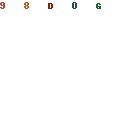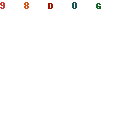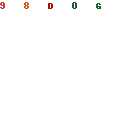Table of Contents
Introduction
Are you a serious golfer trying to raise your level? Maybe you’ve noticed that your dependable golf club is beginning to show indications of deterioration, especially in the shaft. Don’t worry! You may learn how to reshaft a golf club by following the instructions in this guide. This instructional video will walk you through replacing your golf club’s shaft and getting back on the course, regardless of your level of experience.
Understanding the Importance of a Well-Maintained Golf Club
The Role of the Golf Club Shaft
As the link between the grip and the club head, the shaft is an essential part of a golf club. It has a big impact on how well the club performs and feels as you swing it. Your game may be negatively impacted by a damaged or worn-out shaft, which could result in erratic shots and less accuracy. To maximize your golfing experience, it is crucial to maintain and, if required, replace the shaft.
Signs that Your Golf Club Shaft Needs Replacement
It’s critical to understand the warning signals that a new shaft is required if you play golf. Some typical signs include:
Visible cracks or dents:
Look for any obvious evidence of damage, such as cracks or dents, on the shaft. These could jeopardize the club’s structural soundness and impair how well it performs.
Vibration that is too much: If you experience vibration that is too much as you swing, the shaft may be worn out or broken.

Changes in club performance:
Are you noticing a noticeable drop in your golf club’s performance? A worn-out shaft may show signs of wear such as inconsistent shots, shortened distances, or a lack of control.
Difficulty in gripping:
Are you noticing a noticeable drop in your golf club’s performance? A worn-out shaft may show signs of wear such as inconsistent shots, shortened distances, or a lack of control.
Preparing for the Reshafting Process
Getting the Required Equipment and Materials
Make sure you have the necessary tools and supplies on hand before starting the reshafting process:
- A golf club vise
- Hairdryer or a heat source
- Hacksaw or shaft extractor
- (Medium and Fine Grit) sandpaper
- Solvent (such as mineral spirits or acetone)
- Epoxy cement
- Tape for golf grip
- Gripping substance
- A razor blade or utility knife
These tools are necessary for reshafting your golf club in a secure and efficient manner.

Removing the Old Shaft
To begin the reshafting process, you must first remove the old shaft. Follow these steps:
Secure the club in a golf club vise:
Place the club firmly in the vice, making that the head is securely gripped and the shaft is visible and reachable.
Apply heat to the hosel:
Apply heat to the hosel area for one to two minutes using a heat gun or hairdryer. This will make it simpler to remove the shaft from the hosel by softening the adhesive bond between them.
Extract the old shaft:
Just above the hosel, carefully cut through the old shaft using a shaft extractor or a hacksaw. To remove the remaining section of the shaft from the hosel, use moderate force. During this process, take care not to harm the club head or hosel.

Selecting the Right Shaft
Understanding Shaft Materials
The various materials that are available should be taken into consideration when selecting a new shaft. Steel and graphite are the two main choices. Each material has unique qualities, including:
Steel shafts:
Steel shafts are renowned for their resilience, steadiness, and reliable operation. They are perfect for players who like a more conventional feel or have higher swing speeds.
Graphite shafts:
Steel shafts are heavier and less flexible than graphite shafts. They can aid in accelerating swing speed, and players wanting greater distance and forgiveness frequently like them.
When choosing the material for your new shaft, take your swing speed, playing style, and personal preferences into account.

Considering Flex and Weight
Flex and weight are important considerations when selecting a shaft. Weight has an impact on the overall feel and control of the club, whereas shaft flex refers to its capacity to bend throughout the swing. These are the four primary flex options:
Extra stiff:
Designed for players who swing the club extremely quickly.
Stiff:
Appropriate for golfers with faster swing speeds.
Regular:
The most popular flex choice, appropriate for a variety of athletes.
Senior or flex:
Ideal for players looking for higher ball flights or those with slower swing rates.
Selecting the right flex and weight that go with your swing and playing style is crucial. You can make a more educated choice by talking to a club fitting specialist.

Measuring and Cutting the New Shaft
Determining the Correct Shaft Length
You must make sure the new shaft is the proper length for your height and swing before cutting it. To measure and establish the proper shaft length, follow these steps:
Assume your address position:
Put the club sole on the ground and hold it naturally in your standard golfing stance.
Measure wrist-to-floor distance:
While keeping your address position, have someone measure the distance from your wrist to the ground.
Refer to a club fitting chart:
Consult a club fitting chart using your wrist-to-floor measurement to get the ideal shaft length for your height and swing style.
Remember that these measurements are only suggestions and that everyone’s tastes may differ. To fine-tune the shaft length to your preference, adjustments can be performed.

Marking and Cutting the Shaft
Following these procedures will help you mark and cut your replacement shaft once you’ve chosen the right length for it:
Mark the desired length:
Mark the length that has been established from the shaft’s tip with a pencil or marker.
Secure the shaft:
Secure the shaft using a golf club vise, making sure the indicated line is in line with the jaws of the vice.
Cut the shaft:
Carefully cut through the designated line using a hacksaw. To ensure a clean cut, apply regulated pressure that is steady. Throughout this process, use protective gloves and eyewear.

Preparing the Club Head
Cleaning the Hosel
Cleaning the club head’s hosel region is crucial before putting the new shaft in. Take these actions:
Apply solvent:
Utilize a clean cloth or paper towel and a solvent, such as mineral spirits or acetone.
Wipe the hosel:
Wipe the interior of the hosel thoroughly to get rid of any glue or leftover residue from the prior shaft.
Inspect for cleanliness:
Make sure the hosel is clean and clear of anything that can prevent a strong binding with the new shaft.
For a proper shaft installation, the hosel surface must be clean.

Applying Epoxy to the Hosel
The brand-new shaft is attached to the club head using epoxy adhesive. Apply epoxy on the hosel by following these procedures:
Mix the epoxy:
In accordance with the manufacturer’s instructions, prepare the epoxy adhesive. On a clean surface, combine equal parts of the epoxy resin and hardener to achieve this.
Apply epoxy to the hosel:
Apply a thin layer of epoxy carefully within the hosel using a small brush or applicator. Make sure the surface is evenly coated all over.
Installing the New Shaft
Inserting the Shaft into the Hosel
It’s time to install the replacement shaft now that the hosel has been prepared. To ensure a proper installation, follow these steps:
Align the shaft and hosel:
Make sure that the hosel and the tip of the new shaft are exactly centered and aligned.
Insert the shaft:
Till the shaft reaches the correct depth, slowly insert it into the hosel while applying light pressure. Be careful not to overtighten or push the shaft.

Aligning the Shaft and Club Face
Follow these procedures to make sure the shaft and club face are properly aligned:
Check alignment:
A reference point, such as the club’s scoring lines or the manufacturer’s logo, should be used to align the face and shaft of the club.
Make adjustments if necessary:
Gently twist the shaft to realign it if the alignment seems incorrect.
Curing and Finishing
Allowing the Epoxy to Cure
It’s crucial to give the epoxy adhesive enough time to fully cure after inserting the replacement shaft. For the recommended curing time, according to the manufacturer’s recommendations. The epoxy typically takes 24 to 48 hours to completely set.

Removing Excess Epoxy and Finishing Touches
When the epoxy has dried, use the following actions to get rid of any leftover epoxy and finish the reshafting process:
Clean excess epoxy:
Carefully scrape away any extra epoxy that may have dripped out of the hosel area during the curing process using a utility knife or razor blade.
Smooth the shaft:
Make sure the cut end of the shaft is flush with the club head by smoothing it with sandpaper.
Reapply the grip:
If you want to repurpose the current grip, gently remove it, clean it, and then secure it to the shaft using fresh grip tape and a gripping solvent. For a different feel, you may install a new grip.
Frequently Asked Questions
Can I reshaft a golf club on my own?
Yes, you can reshaft a golf club on your own if you have the required equipment, supplies, and fundamental knowledge of the procedure. However, it is advised to get help from a qualified club fitter or golf club repair specialist if you are hesitant or uncomfortable with the task.

How long does it take to reshaft a golf club?
When epoxy has time to set, the reshafting procedure normally takes a few hours. Giving each step enough time will ensure a quality and long-lasting reshafting process.
What tools do I need for the reshafting process?
Golf club vise, heat gun or hairdryer, shaft extractor or hacksaw, sandpaper, solvent, epoxy adhesive, golf grip tape, gripping solvent, and a utility knife or razor blade are all necessary instruments for reshafting a golf club.
Are there different shaft options for different types of golf clubs?
Yes, depending on their design and intended use, certain golf clubs (drivers, irons, wedges, etc.) may have particular shaft needs. To make sure you choose the right shaft for your particular club, seek advice from a club fitting expert or conduct extensive research.
Can I reuse the grip when reshafting a club?
If the grip is still in good shape, you can reuse it. During the process of reinstallation, carefully remove the grip, clean it, and then apply fresh grip tape and gripping solvent. For optimum performance, it is advised to replace the grip with a new one if it is worn out or damaged.
Is reshafting a golf club cost-effective compared to buying a new one?
If the club head is still in good shape, reshafting a golf club may be a more affordable option than buying a new one. You can improve the performance and feel of your current club without spending money on a brand-new one by just changing the shaft.
Conclusion
You can maintain and adjust your golf equipment to meet your needs by learning how to reshaft a golf club. You may confidently replace the shaft of your golf club by following the detailed instructions provided in this tutorial, which will enhance its performance and lengthen its lifespan. Always remember to assemble the required equipment and supplies, choose the ideal shaft for your needs, and carefully carry out each stage of the reshafting procedure. Reshafting your golf club is a rewarding task that can improve your game and increase your enjoyment on the course, regardless of your level of experience.






